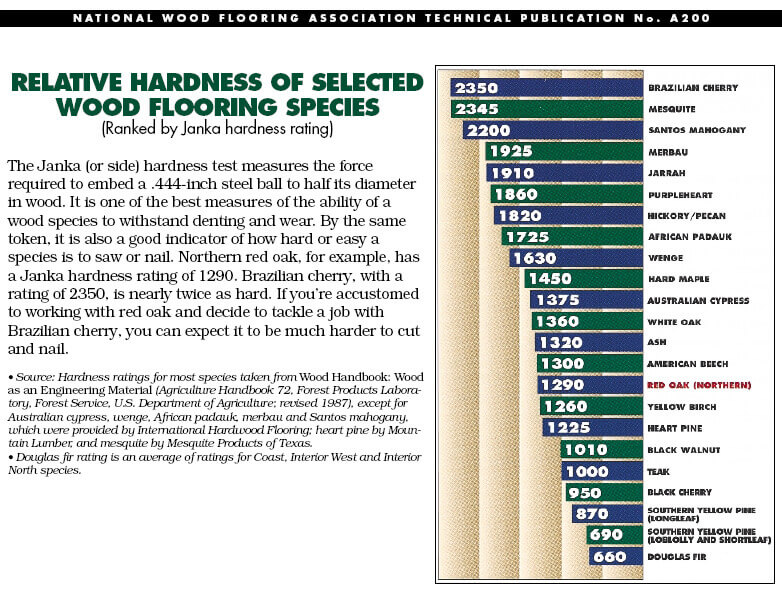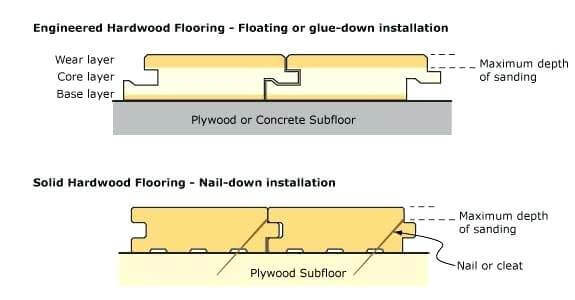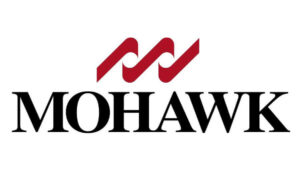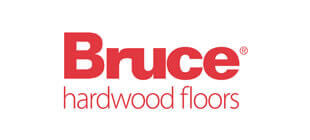March 6, 2018
If you're in the market for engineered hardwood flooring, I know it can be confusing with so many options available, especially in the past few years where choices are now literally in the hundreds.
I mean, which are the best hardwood flooring reviews in the face of so many?
Five companies pioneered, innovated, and introduced new styles and looks specific to the North American market and earned consumers' trust over time. I've gone through each of these companies a little later in this article.
A massive influx of Chinese-made products has saturated the market, often confusing customers into the real difference between a hardwood using primarily North American or European timber Vs. Those using Asian woods.
As a flooring contractor who has specialized in hardwood flooring of both the engineered and solid varieties, I've put together this brief overview for you to know which of the top brands use primarily North American hardwoods in their veneer.
The list is by no means exhaustive; it just shows you out of all the brands I've worked with, these are what I consider the very best.
First up, there are some essential things you need to be aware of when buying hardwood floors, starting with.

It's essential to know the difference between companies that use primarily superior North American and European hardwoods in their engineered product veneers versus using Asian woods.
See, wood that grows in the northern regions of North America (including Canada) and Europe grows a lot slower due to the extended cold winters there.
So the wood ends up being denser, harder, and more durable than exotic woods.
Exotics grow much faster in more tropical environments (of course, all wood will scratch eventually, and if yours does, then you can quickly repair minor scratches yourself using high-quality touch-up pens).
That's one reason you may find hardwood floors grown, harvested, and made here run more than those from China.
You will also notice pound for pound; they weigh more. Check out the Janka Scale to the right if you would like to get an idea of the softest to hardest hardwoods out there.
Just keep in mind that all wood will scratch over time.
After all, have you ever seen a tree without a scratch on it?
Okay, so you're looking for hardwood flooring but want to do some last-minute research.
Great!
Here are seven specific things to look out for when figuring out which floor type is best for you.

Many people think that just because it's not a solid piece of wood, engineered wood isn't real wood.
Engineered wood is undoubtedly natural hardwood, but it's constructed differently in many layers (ranging from 3-12) instead of one solid piece.
More often than not, it is glued directly onto your concrete slab or subfloor.
The multiple layers on the product are usually cross plied meaning the grain or direction of the wood crisscrosses down the layers. This gives the wood excellent stability, meaning it does not move around anywhere near solid wood.
This means less gapping and movement of the planks throughout the year when different temperatures and humidity kick in compared to solid wood.
It comes in primarily prefinished boards, but there are unfinished products available.
That's why engineered hardwood floors work anywhere: at grade level (concrete), above grade (upstairs), or below grade (basement). Solid wood should only go at or above grade. This is mainly due to the large amounts of moisture constantly moving in and out of the concrete.
So before deciding on one or the other, ask yourself which look you prefer and what's most practical for your lifestyle?
Obviously, with the solid option, you can customize it a lot more by selecting wood species, level of scraping, color, finish and even plank width.
As a guide, some woods have more natural grain and character than others.
Pronounced grain mineral streaks usually characterize oak (red and white), hickory, and pine, and knots, giving a more rustic/traditional look. At the same time, maple, birch, and walnut are relatively "stiller" with less going on and provide a more contemporary appearance.
Pick one that your eyes are drawn to, and don't worry about what's "in" right now. Wood is timeless, so it's all just a matter of opinion.
This is perhaps one of the most important and misunderstood aspects of buying hardwood flooring.
Many perceive the more the wood costs, the better the quality. I've even read many experts say the same thing.
Guys, this is not true.
While this can be the case - like for example, Select Grade solid wood will run you more than Grade #2; this is not a very accurate assessment of how the wood will hold up for your particular lifestyle at all!
For example, if you have a family of 14 with five werewolves and lots of guests, then the $8 sq/ft installed engineered hickory is going to outlast your $15 sq/ft installed ultra exotic solid American cherry floor that's custom hand-scraped and stained in color only recently discovered by humans!
Just because it is expensive does not mean it's better quality or suitable.
Acacia, walnut, cherry, and pine are all super beautiful floors, but they're also soft and scratch up pretty fast, especially in an active home.
I strongly advise you to select the color/look you like in a type of wood suitable for your lifestyle.
That way, you cover all your bases.
One common misconception here is the number of resandings and refinishings a solid floor could get is substantially more than an engineered.
It goes something like this:

"Oh wow, look at the solid product and all that wood I can resand!"
Then they look at the engineered and say, "well, the top layer is only small, so naturally, I will get way more sandings on a solid piece."
Not so fast.
In some cases, this may be true, but ultimately, you get around the same number of sandings even though solid is usually around 3/4" thick.
In contrast, the top wear layer of an engineered product can range anywhere from 1 ml to 4 ml.
See, you cannot resand the entire solid wood plank. You install solid wood by nailing the boards through the tongue portion into the plywood underneath. You can only sand as far as the nail head allows you!
Otherwise, someone will be troubled when their $10,000.00 sander ruins. So do not base your decision on this because the only reason you would have to refinish your entire floor is either you want to change the color or the whole floor has extensive damage throughout.
Other than that you do not need to resand your floors. You can do a screen and recoat, which removes the existing polyurethane and reapply a fresh coat bringing new life to the floor.
Since solid wood nails down to the subfloor, the height of your floor is going to be considerably higher compared to engineered.
Keep in mind you have between 5/8ths to 3/4" plywood underneath.
Then when you factor in the moisture barriers, your floor will be approximately 1 & 1/2" inches high. This may not appear to be a big deal for some; however, it does have several flow-on effects like:
The second thing to look out for is your baseboards.
Since the floor will be higher, your baseboard height will also rise. If you are doing a large project such as an entire house, all baseboards will rise or need replacing. This won't be an issue if it's new construction as the baseboards go on after the floors are down.
If you are doing just a few rooms or so, then the height of the baseboards in those rooms will be different than connecting rooms, so keep that in mind if that visual is not for you.
Something else that many folks, including flooring pros, completely forget about are wall plugs.
Often, since the new solid floor raises everything, the electrical plugs around the room's perimeter can sometimes be in the way. This means they need to move a few inches away from the baseboards unless you want to notch around them. As a result, some minor sheetrock and painting patch work may happen.
If your floor sits higher, then there is a strong possibility your doors need to be "planed" (sanded from underneath) afterward to fit correctly. The more you have, the more work involved. This incurs additional costs, so ask your contractor about this beforehand.
Finally, transitions between the new solid wood flooring and lower flooring like carpet or tile will be different. The threshold will ramp down to the lower flooring. These are just some things you need to be aware of before deciding on solid wood.

Known for their exceptional high-end quality and unparalleled locking system that makes joints as tight as possible, Kahrs have their main production factory in Småland, Sweden, surrounded by forest. They also have some minor production in Poland, Romania, and China.
They source woods like American Cherry, North American Maple, Walnut, and others out of North America but manufacture it out of their plant in Sweden. Their ash and beech products are sourced locally in Scandinavia because they are naturally most prominent.
Even their exotic woods like Brazilian Cherry/Jatoba out of South America have their manufacturing done at their Swedish plant. They're also a very green company ensuring they harvest the trees with sustainability, replanting, and environmental focus/health in mind. They do not use any wood out of China.
Their attention to detail and quality control makes this brand super easy to install. Hence, flooring installers love it, but most importantly, you can see and feel the difference in quality with these floors compared to others.
The graining is distinct, the joints are super tight, and you won't find a more vivid color and finish. Above all, their collections reflect the demands of today's market, so you're assured of finding something that you love.
I have worked with this brand for a long time and would place it slightly above the rest of the field for its overall, consistent high performance across the board while maintaining its wood sourcing from reputable places.
If you like wide planks, this brand is for you since most of their products are 7"+ wide.
See here for a complete review of Kahrs hardwood.

Mannington is another company I've had a long history with, and once again, it's just been overall consistent with the quality of its wood flooring products. They manufacture most of their hardwoods in the US, with some manufactured in Guatemala. Yet, they use North American hardwood species (unless the wood is specifically South American, like Brazilian Cherry, for example).
Their website is very good at telling customers the specifications of each product.
For as long as I can remember, their product line has been very diverse, containing high-quality hardwood at several different price points.
Their "Jamestown Oak Plank," for example, has been their entry-level floor for decades. You get a very high-quality product at a very reasonable price point. Yes, it is a "plain" narrow plank oak product, but if that's the sort of look you like, then it's a safe option.
If you're looking for a much different type of floor, then there are another 135 products to choose from.
They were for a long time also known for their smooth finish as most of their products have that satin or gloss finish, but they recently started making some awe-inspiring distressed and hand-scraped products as well, including some highly sought-after grey colors.

Although not as well known as the other brands, this company almost exclusively sources its wood in North America, with its mills in Quebec, Canada, where they manufacture everything. The only wood from outside North America is their exotic South American species.
They, like Kährs, are a very eco-friendly company with even their finish made from 100% soybean oil which is very safe and non-toxic to humans and pets.
They have just about every look to select from, and a good portion of their products coordinate very well with just about any decor.
They also have a good selection of super wide boards ranging between 6.5" - 8.5" wide. Boards came in a standard 5" wide in the flooring industry for a long time, but Mercier gives you the option of going wider as this has been a definite trend over the past few years.
They do something else that I feel is fabulous - a lot of their lines come in solid and engineered varieties. This is the first time I have seen this in the wood flooring industry.
Usually, manufacturers have separate solid and engineered lines with vastly different looks and colors. The problem, of course, is when a client selects a color in one type of wood but wants it in another! With Mercier, they accommodate that by making many of their products in both forms.
Overall, an excellent brand producing reliable, high-quality products.

As the world's largest flooring company, it also gives you the widest variety to choose from - over 800 products in the engineered line alone, which can be a blessing and a curse.
Of course, it's nice to have a great selection to look at, but it can get overwhelming!
I have worked with Mohawk's engineered and solid floors since 2002, and for the most part, no issues at all.
Due to their sheer volume, I have had minor quality control issues with their products where a box or two were not up to standard, but they promptly exchanged them.
Their product line has some fantastic stuff - absolutely stunning elm, American cherry, and walnut floors that, while soft, offer a one-of-a-kind "peg" look where the floor looks like it still has the original pegs in it like an old, worn log cabin. T
these would work perfectly for a holiday home or bachelor pad looking to replicate such a setting.
They also have an abundance of floors in many different widths, thicknesses, colors, wood species, and finishes - even the beveled edges. Pronounced bevels can give the floor a lot of depth and authenticity, so you can browse their lines and choose the one you like best.
One of the critical advantages of Mohawk, of course, is its sheer size and reach. Their products are available everywhere, from Home Depot to specialty flooring stores (although the products may not be identical).
They also make a comprehensive range of complementary trim and moldings, which they stock quite well (these items are most frequently back-ordered / out of stock).
This brand is a very safe one due to its global presence and long history in hardwood flooring.

Bruce hardwoods finish out my top 5 list with its distinct oak and hickory floors sold across the country in various stores. They carry other species, like birch, cherry, and walnut, but they only form a fraction of the line, predominately oak, followed by hickory, then maple.
All of their solid hardwood products are sourced and manufactured in the United States.
Most of their engineered products are sourced and manufactured in the United States except for the following collections: TimberBrushed, Artesian Hand Tooled, and Rustic Accents. Those three collections are the only collections where sourcing and manufacturing happen overseas.
If you browse their products, you will notice they are very heavy on the distressed, hand-scraped, and traditional looks with plenty of grain, mineral streaks, and imperfections in their floors. If you like these types of looks, this is an excellent brand to start with since you'll have plenty of choices.
Just don't be disappointed if you don't find too many other woods.
Quality wise, both their solid and engineered floors go down well, and their overall quality is a testament to their rigorous standards.
Since their milling process is so precise, the boards fit effortlessly together, and the wood itself, from my experience, has been essentially free of any defects.
They attribute this to their abnormally high-quality checks (up to 75), but whatever they are doing, their products are an excellent fit for those looking for a lot of character on their floors.
A good, dependable brand you can rely on.
The internet is filled with complaints from folks buying hardwood flooring across every brand imaginable - yes, even the very best.
Sometimes it's a manufacturing problem, but most of the time, the issue stemmed from improper installation and/or care by the customer.
However, many complaints insist it was the manufacturer's fault, so I'm going to give you a few pointers if you find yourself locked in a frustrating war with a flooring company over defective material.
Having dealt with both retail and internet purchases many times from clients over many years, please listen very carefully if you want these companies to honor their warranties:
The number one complaint from customers was not that their product was defective. What pissed people off was these companies kept on ignoring them and/or telling them it was their fault (usually due to faulty installation) or that the products became that way AFTER installation.
They are washing their hands of the problem no matter how bad it is.
I know this is a real problem because I've had to clean up many messes for folks who weren't treated right by some companies.
Please understand I am not singling out any particular company; I am just saying there are specific measures you can take to protect yourself from being mistreated after the sale:
If this is the case, then film yourself pulling the materials out of their boxes, ensuring to show they are defective.
DO NOT INSTALL THE FLOOR.
Most manufacturers state, "once the board has been installed, it is deemed to have been accepted by the installer and owner even if the latter is absent at the time of installation."
Make sure you read the manufacturer's warranty because they all have many different exclusions in their terms. So you must be aware of what they will and will not cover. If you install it, then complain; trust me when I say they will not be easy to deal with.
If there are no apparent defects, take pictures anyway before installing anything, ensuring to record the date. Check for discoloration, delamination, abnormal holes, and other faulty characteristics. This will provide irrefutable proof this was on the manufacturer and not on you.
If a manufacturer sends their representative out to look at the floor, be sure to document everything. They rarely admit fault because they don't incriminate their company, so don't get too upset if they don't acknowledge what's apparent.
Most cases that show clear manufacturer fault are taken care of reasonably well, but in the rare case you get the runaround, you can do the following:
1. If you purchased your floors online and the manufacturer will honor such a warranty, then get a hold of the local representative for that product.
You can find this out by calling the company or their distributor and asking for your local rep. If they do not provide it, contact any flooring store and ask for the rep's information for that company.
If you bought your product through a flooring store, you're going to have to file your claim through them. The more noise you make and the more you follow up, the faster you will get things resolved.
2. If you're not getting anywhere after trying this, then, fortunately, you can get a non-biased flooring inspector to examine everything and give you a detailed report.
Go to The National Institute Of Certified Floor Covering Inspectors website and search for an inspector in your area. They are an independent group that specializes in claims like this!
Plus, you may be able to recuperate this cost as part of your claim if the company isn't cooperating.
The inspector will write an independent report, and if it is the manufacturers' fault, they will state so in an official report. This is a crucial piece of evidence if you have to go to a small claims court as a last resort.
But let me say that once a company receives a Certified Floor Covering Inspector (CFCI) report declaring their flooring is defective and not anything from the customer's side, they will come to terms with you.
I hope this article and accompanying buying guide helps you select your new hardwood floors and avoid any potential problems in the future.
Just remember to use common sense:
1. Pick out a floor suitable to your lifestyle and taste and not necessarily the most expensive one
2. Use the proper installation materials, particularly the adhesive
3. Get a qualified installer to install your floors
4. Care for your floor as best you can, following the manufacturer's recommendations.
This ensures you have done everything right, so in the rare case of a claim, you give any company very little choice but to honor the warranty.
Finally - please understand you are purchasing hardwood and not an indestructible floor. Hardwood naturally changes color and scratches over time, and this is part and parcel of owning one.
By caring for it, though, will only add character to your home for many years to come.
Please reach out if you have any questions or need assistance with choosing your floor, filing a claim, or anything else; I'm always glad to help! 🙂